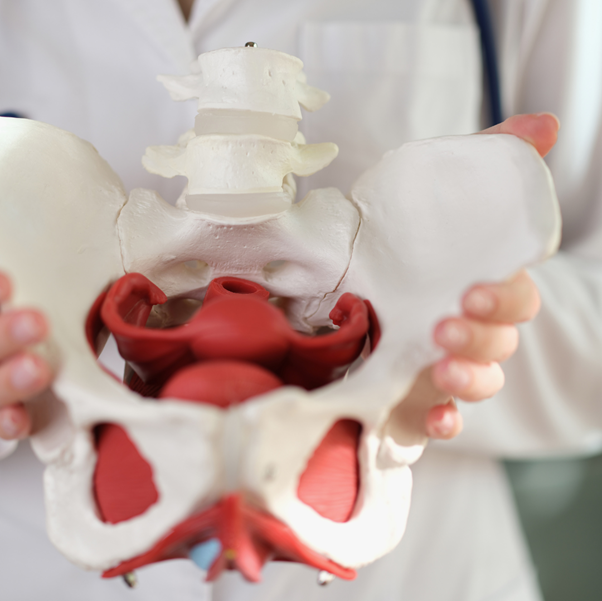Pelvic organ prolapse is a common condition where the bladder, uterus or rectum can start to drop downwards towards the entrance of the vagina. It may be one of or a combination of the above three pelvic organs that move out of place. In its later stages the pelvic organ/s can protrude outside of the vagina.
How do I know if I have prolapse?
Symptoms of pelvic organ prolapse may include the following:
- Feelings of vaginal heaviness
- Noticing a bulge at the entrance of your vagina
- A dull ache in the lower back or lower abdomen
I think I may have prolapse, so what can I do about it?
Treatment options will depend on the circumstances of the individual and the grade of prolapse that they have. There are either conservative or non-conservative options.
Conservative options include pelvic floor strengthening exercises to prevent the prolapse from getting worse, management of intra-abdominal (tummy) pressure and addressing lifestyle factors.
If the prolapse is particularly bothersome or in advanced stages our physiotherapists are trained to fit pessaries which are a non-surgical treatment option to manage symptoms and also prevent the prolapse from worsening.
Finally, surgery is an option for those who are appropriate or fail conservative measures.
If I am going to have surgery, do I still need to do pelvic floor exercises?
YES! Just like any other surgery it is extremely important that you complete exercises before and after to maximise the benefits of the surgery and minimise risk of surgery failure.
Are there any other tips to help me manage my symptoms in the meantime?
- Avoid constipation and straining.
- Rest in the middle of the day with your legs elevated.
- Avoid heavy lifting and minimise jumping or running activities if they make your symptoms worse.
- Manage any chronic respiratory conditions or coughing symptoms.
For more information, please do not hesitate to contact us on (02) 8883 5360 or email at info@sydneywomensphysiotherapy.com.au
Kiera


